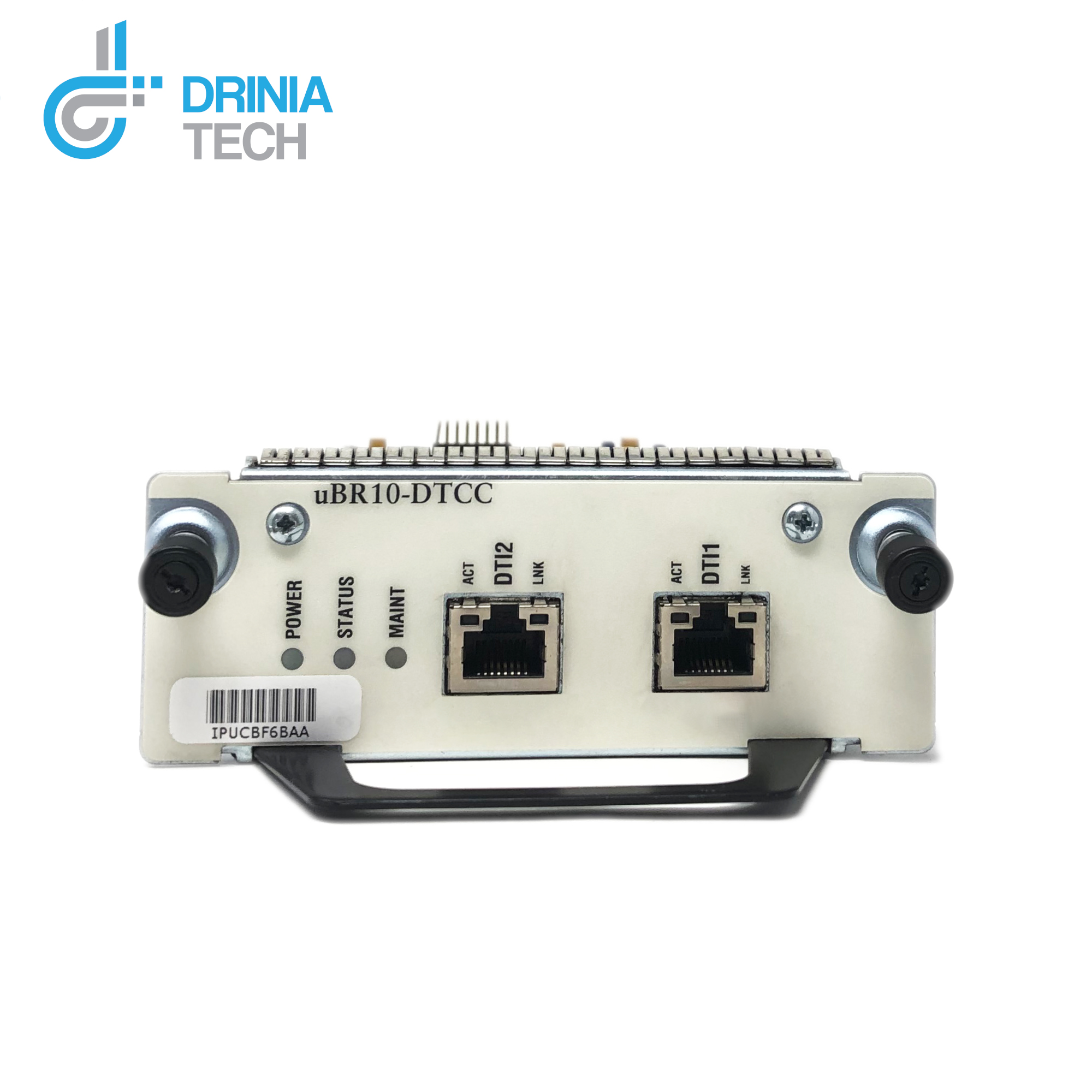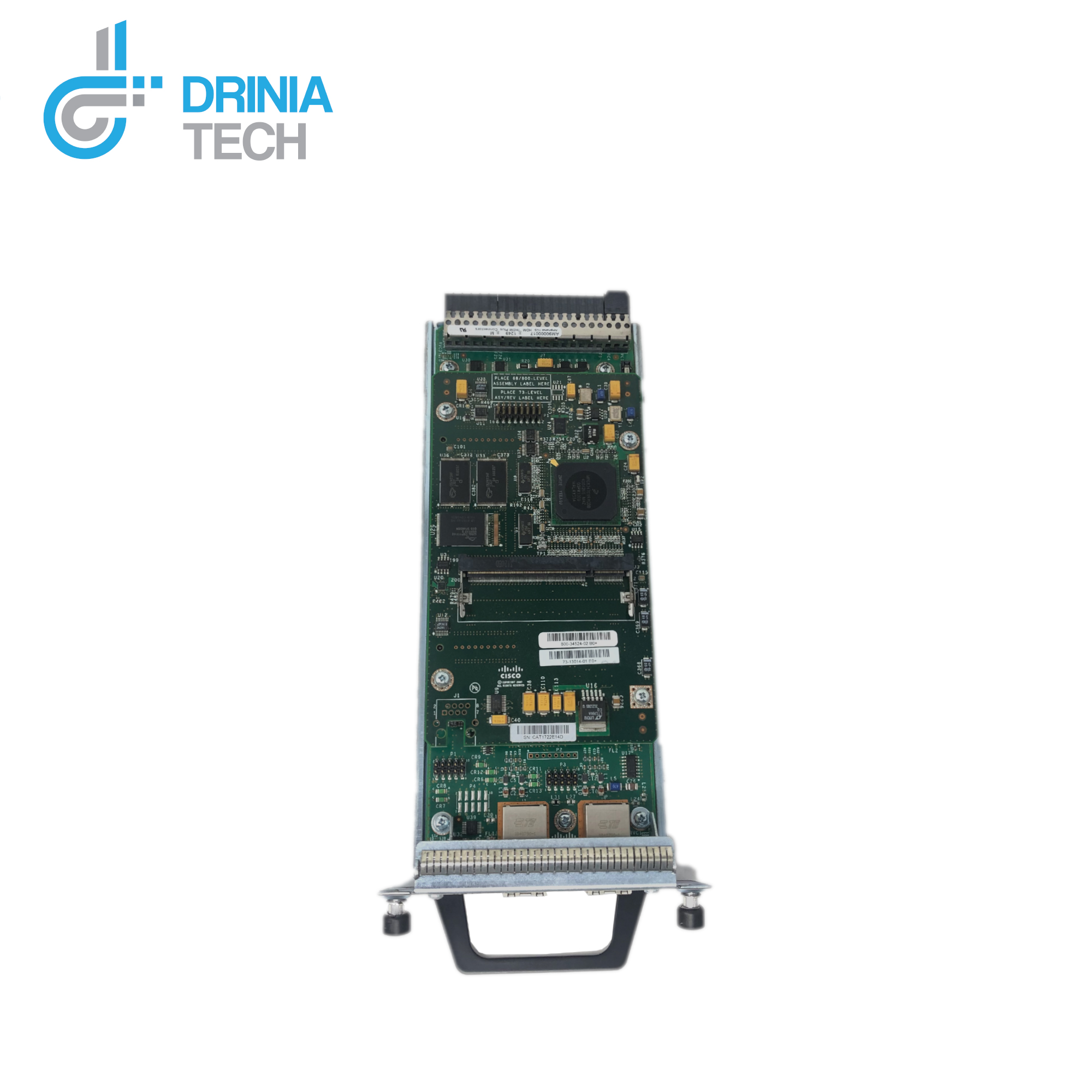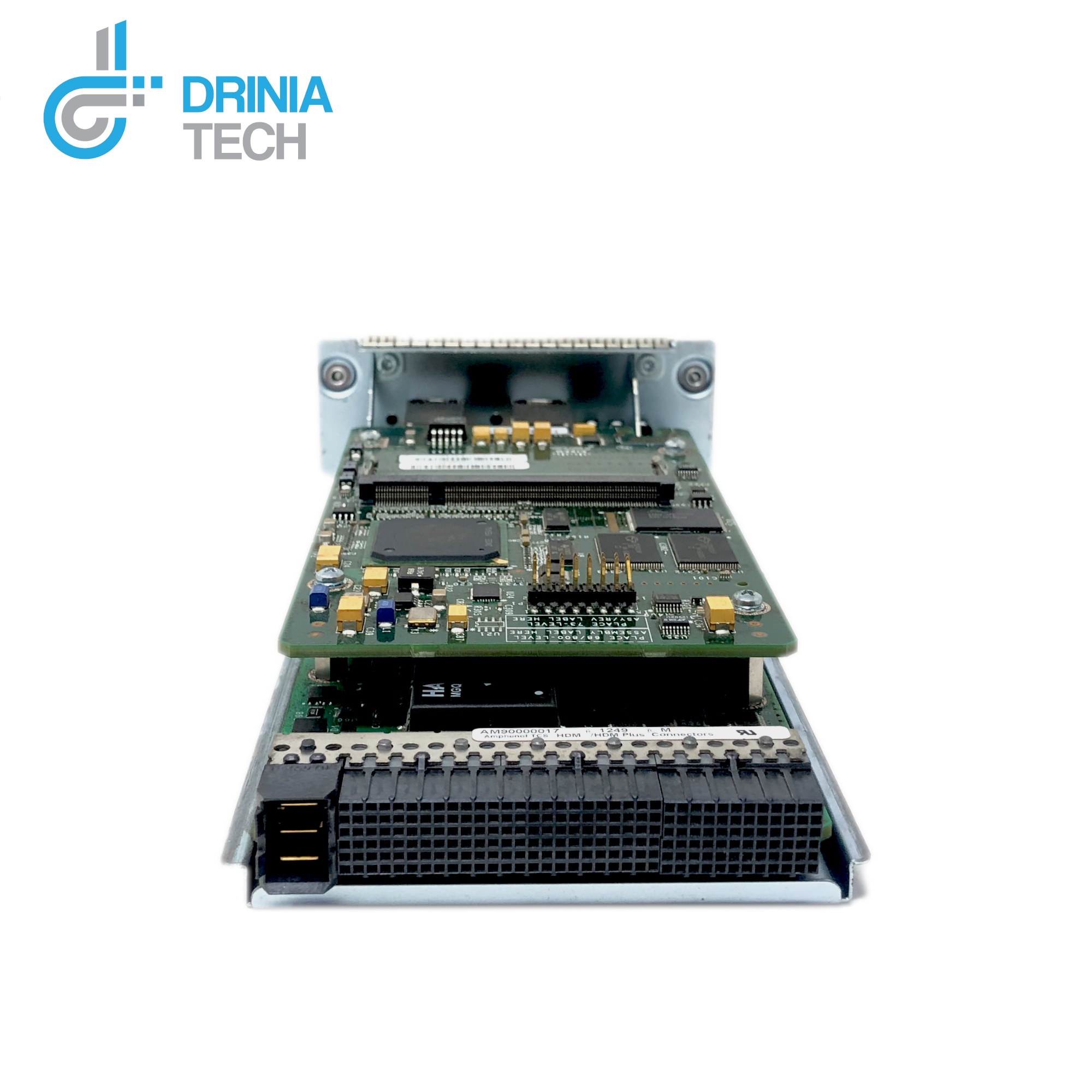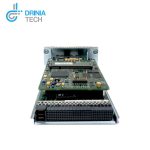uBR10-DTCC
Two DTCC cards are installed and configured as active (primary) and backup (redundant). If the DTCC card in the first slot is working at system power-up, it automatically becomes the active card and the DTCC card in the second slot becomes the backup card. The DTCC cards monitor each other’s priority information, so that if the active card fails, the active card role is transferred to the redundant backup card without loss of data.
- In the default DTI mode, a 10.24 MHz clock and 32-bit DOCSIS timestamp are generated by the DTI Server, propagated to DTI client using DTI protocol, and distributed by DTI client to each cable interface line card.
- Allows software to independently power off any or all cable interface line cards.
- Drives the LCD panel used to display system configuration and status information.
- Monitors the supply power usage of the chassis.
- Two RJ-45 cables with the DTI server, which, in turn, can generate the clock using its own oscillator or external timing reference inputs such as GPS or network clock.
On the Cisco uBR10012 universal broadband router, the DTCC card acts as a secondary processor that performs the following functions:











